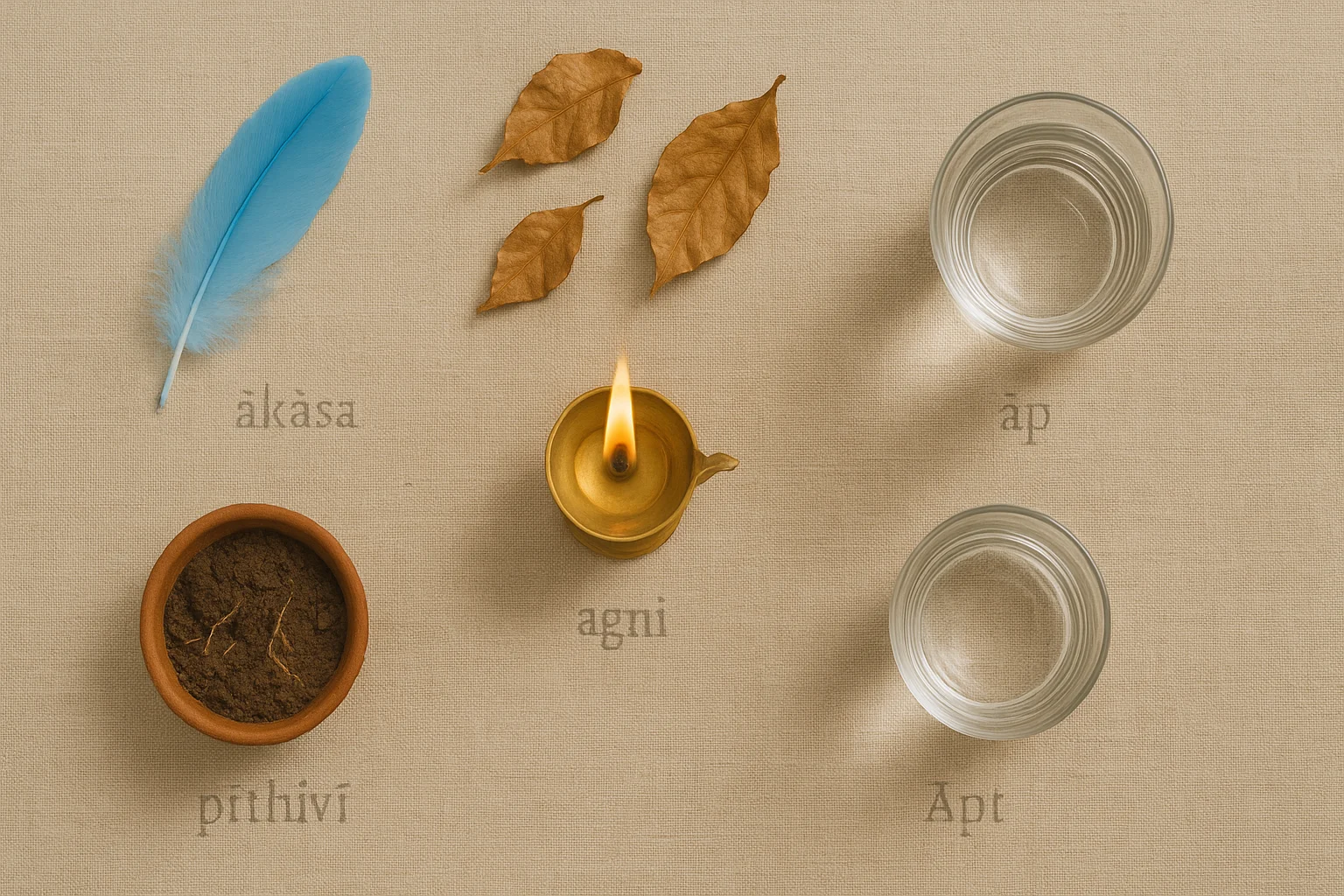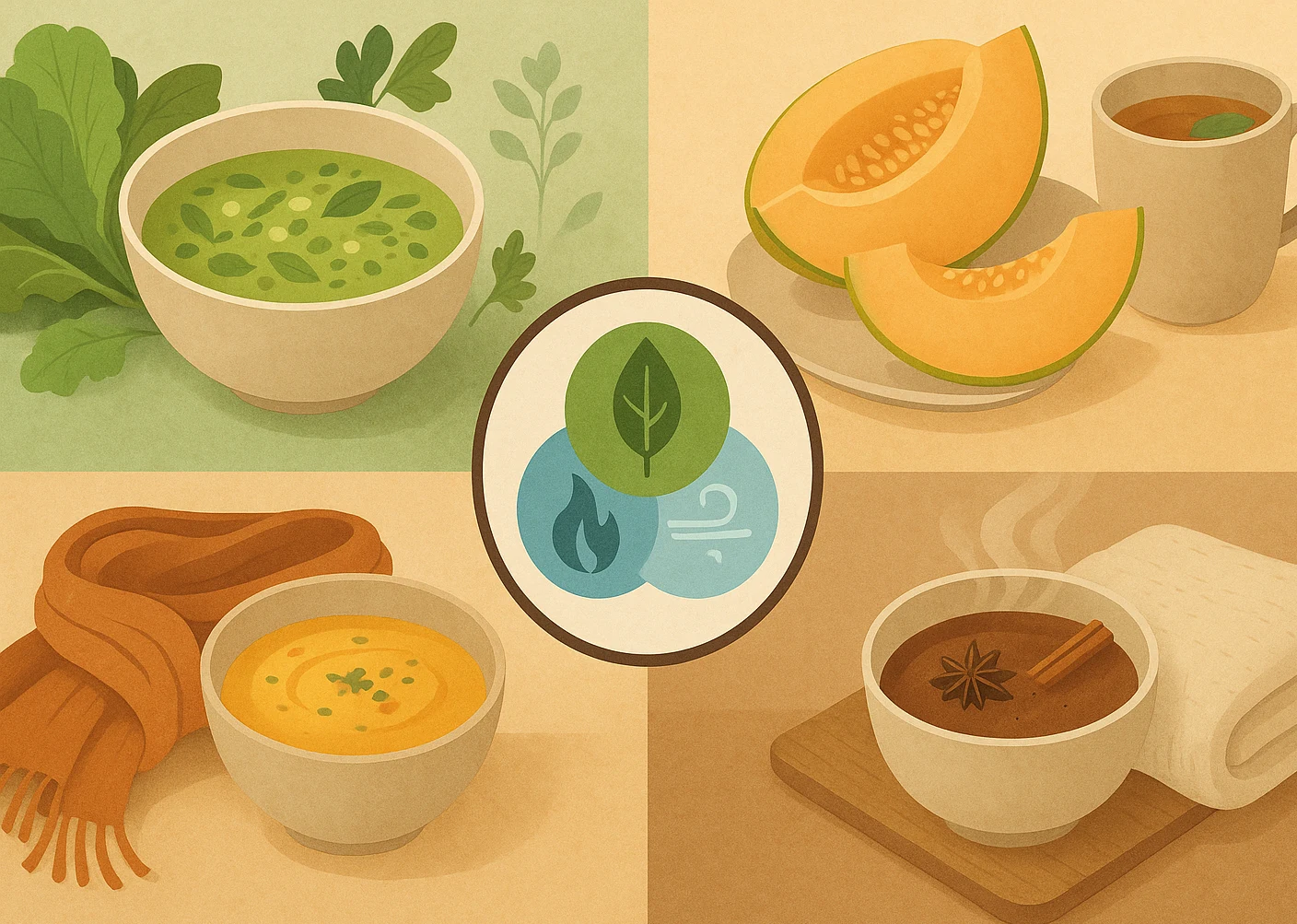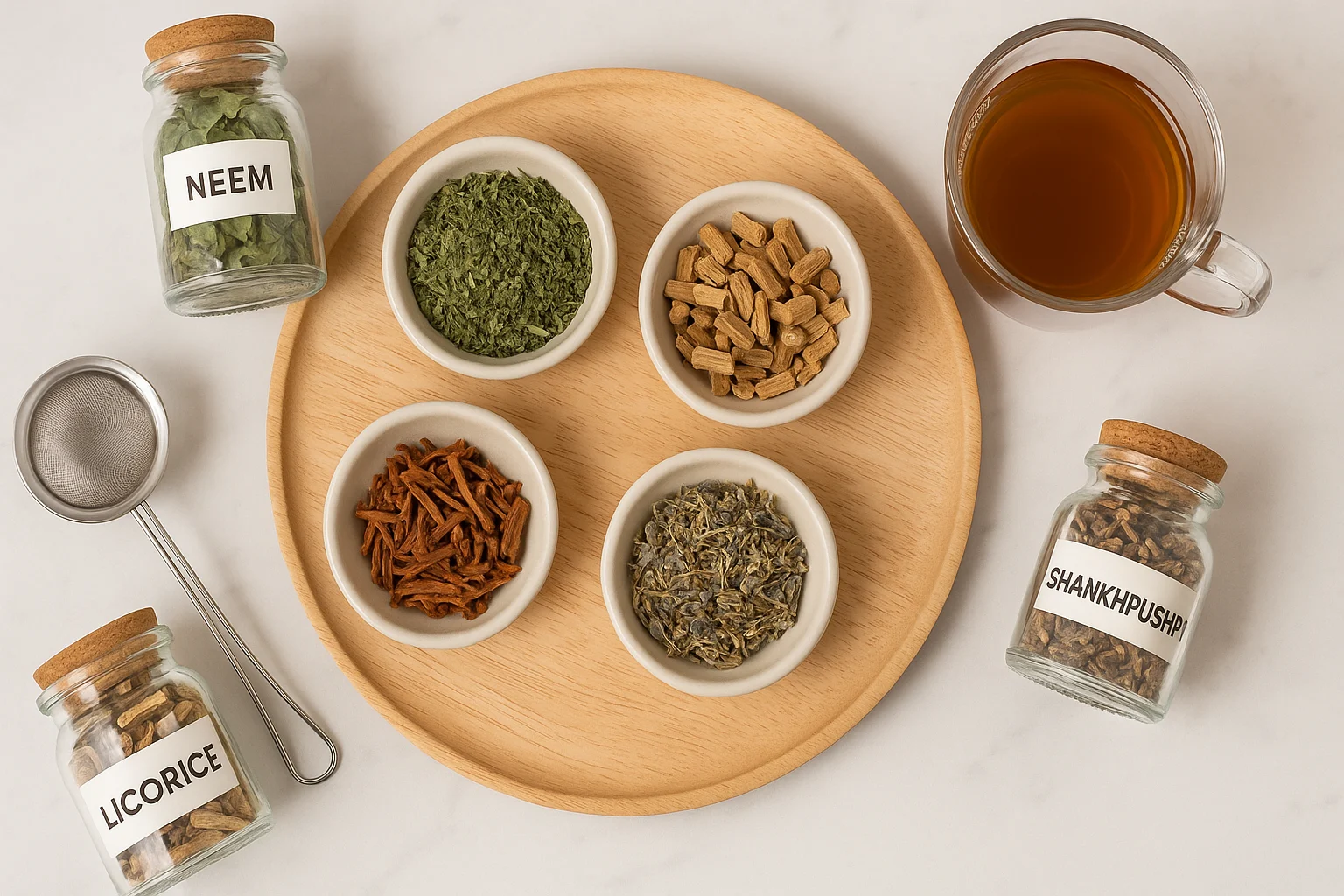
Feeling overwhelmed by the pace of modern life? Many adults report dealing with chronic stress. But there’s good news: this Ayurvedic wellness guide offers practical solutions grounded in ancient wisdom, tailored for today’s fast-paced world.
Discover Your Dosha Now!Table of Contents
- Ayurvedic Wellness Guide Basics
- Ayurvedic Wellness Guide: Discover Your Dosha (Quiz)
- Understanding Balance in Ayurveda
- Ayurvedic Wellness Guide: Daily Routines (Dinacharya)
- Seasonal Tips (Ritucharya)
- Remedies & Herbs
- 7-Day Starter Plan
- Integrating Ayurveda into Modern Life
- Frequently Asked Questions
- Conclusion & Next Steps
Ayurvedic Wellness Guide Basics: A Holistic Approach
Ayurveda’s more than a medical system; it’s a lifestyle rooted in harmony with nature. Originating in India thousands of years ago, this “Science of Life” (from Sanskrit “Ayus” meaning life, and “Veda” meaning knowledge) teaches you to understand your unique constitution and make choices that foster health and happiness. Unlike conventional medicine, which often focuses on symptoms, holistic wellness Ayurveda takes a complete view, considering your physical, emotional, mental, and spiritual well-being. Let’s explore its foundational concepts to see how this holistic wellness approach can transform your life.
The Five Elements: Building Blocks of Life
In Ayurveda, everything in the universe, including your body, is made of five elements, or Panchamahabhutas:
- Ether (Akasha): Represents space, like the cavities in your mouth or chest.
- Air (Vayu): Governs movement, such as breathing or blood circulation.
- Fire (Tejas): Drives transformation, like digestion or body heat.
- Water (Jala): Provides fluidity, found in blood, lymph, and saliva.
- Earth (Prithvi): Offers structure, seen in bones, muscles, and hair.
These elements combine to form three biological energies, or Doshas, which shape your health and personality. To align your diet with these principles, check out our Ayurvedic diet basics for Dosha-specific eating tips.

The Three Doshas: Your Ayurvedic Wellness Blueprint
Your Dosha is your unique wellness blueprint, set at conception (Prakriti). Imbalances (Vikriti) arise from lifestyle, diet, or stress. Here’s a breakdown of each Dosha to guide your Ayurvedic journey:
Vata Dosha (Air + Ether)
- Qualities: Light, cold, dry, rough, mobile, quick.
- Physical Traits: Thin build, dry skin, cold hands/feet.
- Mental Traits: Creative, enthusiastic, but prone to anxiety or restlessness.
- Imbalances: Constipation, insomnia, joint pain, nervousness.
- Balancing Tips: Eat warm, moist foods; stick to routines; try calming yoga.
Vata Quick Tips:
- Start your day with warm oatmeal.
- Use sesame oil for self-massage.
- Try 10 minutes of meditation daily.
Pitta Dosha (Fire + Water)
- Qualities: Hot, sharp, oily, intense.
- Physical Traits: Medium build, warm skin, prone to acne.
- Mental Traits: Intelligent, ambitious, but can be irritable or critical.
- Imbalances: Heartburn, rashes, anger, impatience.
- Balancing Tips: Favor cooling foods; avoid spicy dishes; practice patience.
Pitta Quick Tips:
- Drink cooling cucumber water.
- Swim or walk in nature.
- Use coconut oil for skin care.
Kapha Dosha (Earth + Water)
- Qualities: Heavy, cold, moist, stable, slow.
- Physical Traits: Sturdy build, smooth skin, weight gain tendency.
- Mental Traits: Calm, loving, but can be lethargic or possessive.
- Imbalances: Congestion, weight gain, depression, allergies.
- Balancing Tips: Eat light, pungent foods; exercise vigorously; seek new experiences.
Kapha Quick Tips:
- Try a spicy ginger tea.
- Go for brisk morning walks.
- Use light jojoba oil for skin.
This post has affiliate links. We may earn a commission. Learn more.
Ayurvedic Wellness Guide: Discover Your Dosha (Quiz)
Not sure where to begin? Let’s start with a quick quiz to uncover your unique energy type—your Dosha—so you can personalize your Ayurvedic wellness journey. Perfect for anyone exploring Ayurveda for beginners.
Find Your Dosha
Answer these questions to discover your unique Ayurvedic constitution.
1. How would you describe your body frame and weight tendency?
With your Dosha in mind, let’s explore how to maintain balance through daily practices.
Understanding Balance in Ayurveda
In Ayurveda, your Prakriti (natural constitution) is your unique Dosha blend. But daily habits, diet, or stress can cause imbalances (Vikriti). For instance, too much Vata might leave you anxious, while excess Pitta could trigger heartburn. From a holistic wellness Ayurveda lens, the goal of this approach is to restore harmony. As the ancient text Sushruta Samhita says:
Health is a state of perfect equilibrium of the three Doshas, the digestive fire (Agni), the body tissues (Dhatus), the waste products (Malas), and a happy state of the soul, senses, and mind.
Next, let’s see how daily routines can keep your Doshas in check.
Ayurvedic Wellness Guide: Daily Routines (Dinacharya)
Imagine starting your day feeling refreshed and energized. Dinacharya, or daily routines, aligns your body with nature’s rhythms. Here’s how to weave these practices into your daily routine.
Waking Up with the Sun
Ayurvedic tradition encourages waking around sunrise, which may support regularity and a sense of lightness. This is one of the foundational Ayurvedic health practices for energy and digestion. If that’s too early, aim for a consistent wake-up time. You might find waking up at the same time each day feels like a small gift to your body.
Tip: Set a regular wake-up time, even on weekends, to stabilize your body’s rhythm.
Oral Hygiene: Beyond Brushing
Tongue Scraping: Gently scrape your tongue 5–10 times with a copper or stainless steel scraper—a traditional practice believed to reduce ‘ama’ (metabolic byproducts).
Potential benefits: May include fresher breath and a cleaner tongue; evidence for broader effects is limited.
Oil Pulling: Swish 1 tablespoon of warm sesame oil (or coconut for Pitta) for 10–20 minutes, then rinse.
Potential benefits: May support oral hygiene for some people. It isn’t a medical treatment; discuss with a dental professional if you have concerns.
Ayurvedic Health Practices: Movement & Exercise
Tailor exercise to your Dosha: These ayurvedic health practices can be adjusted to your Dosha and schedule.
- Vata: Gentle yoga, walking, Tai Chi.
- Pitta: Cooling activities like swimming or cycling.
- Kapha: Vigorous exercises like running or dynamic yoga.
Aim for 30–60 minutes most days.
Mindful Eating: Ayurvedic Diet Basics
In Ayurveda, food is considered medicine. Here’s how to eat mindfully:
- Dosha-Based Eating:
- Vata: Warm, moist foods (e.g., soups, stews); avoid raw, dry foods.
- Pitta: Cooling, sweet foods (e.g., melons, greens); avoid spicy, sour foods.
- Kapha: Light, pungent foods (e.g., broccoli, spices); avoid oily, heavy foods.
- Agni (Digestive Fire): Eat when hungry, include all six tastes (sweet, sour, salty, pungent, bitter, astringent).
- Mindful Eating: Chew thoroughly, eat in a calm environment, avoid distractions.
- Seasonal Foods: Prioritize fresh, local ingredients.
Meal Ideas:
- Vata: Kitchari (rice and mung dal stew) with ghee.
- Pitta: Salad with cooling veggies and basmati rice.
- Kapha: Veggie stir-fry with light spices.
Boosting Digestion (Agni)
A steady Agni (digestive fire) may support comfortable digestion.
3 Ways to Boost Your Agni:
- Drink warm water throughout the day.
- Sip ginger tea before meals. For more herbal tea options, check our guide on the best Ayurvedic teas for wellness.
- Take a short walk after eating.
Sleep for Rejuvenation
Quality sleep’s vital for balance.
- Consistency: Keep regular sleep and wake times.
- Wind-Down: Try a warm bath, gentle stretching, or reading.
- Warm Milk: If it suits you, drink warm milk with a pinch of nutmeg before bed.
- Avoid Screens: Turn off devices an hour before sleep.
Ayurveda for Busy Professionals:
- Try 5-minute desk yoga for Vata balance.
- Pack Pitta-cooling snacks like cucumber slices for meetings.
- Take Kapha-stimulating walks during lunch breaks.
Take Priya, a go-getter Pitta type—she ditched her afternoon coffee for peppermint tea and added a short meditation break. Within days, she felt calmer and more focused.
Seasonal Ayurveda Lifestyle Tips (Ritucharya)
Seasons influence your Doshas, so adjusting your lifestyle’s key. Here’s how to stay balanced year-round with these Ayurveda lifestyle tips:
Late Winter/Spring (Kapha Season)
Cold, wet weather aggravates Kapha. Focus on light, warm foods and vigorous exercise.
- Vata: Add warming spices like ginger.
- Pitta: Include bitter greens like kale.
- Kapha: Try spicy soups to spark energy.
Summer (Pitta Season)
Hot weather intensifies Pitta. Go for cooling, hydrating foods.
- Vata: Eat sweet fruits like melons.
- Pitta: Drink cooling cucumber water.
- Kapha: Opt for light salads with lemon dressing.
Autumn/Early Winter (Vata Season)
Cool, dry weather aggravates Vata. Prioritize warm, grounding foods.
- Vata: Enjoy warm oatmeal with ghee.
- Pitta: Include cooked root veggies.
- Kapha: Use stimulating spices like black pepper.
By aligning with seasonal rhythms and following simple Ayurveda lifestyle tips, you may help reduce seasonal discomforts.

Ayurvedic Remedies and Herbs for Modern Wellness
Ayurveda offers traditional herbs to support modern routines. Many people notice herbs like Neem or Shankhpushpi feel like a gentle boost to their day. Here are some key remedies in this guide.
🌿 Neem Oil: Ayurvedic Face Care for Skin Health
Neem’s antibacterial properties are traditionally used for acne and skin care. Explore more:
☕ Best Ayurvedic Teas for Each Dosha
Teas are a gentle way to support your routine and may feel balancing for your Dosha. Here’s a quick guide:
- Vata: Warm, calming teas like licorice tea or ginger tea.
- Pitta: Cooling teas like peppermint or fennel.
- Kapha: Stimulating teas like cinnamon, black pepper, or clove.
Explore our best Ayurvedic teas for wellness to see more blends and benefits.
🍵 Licorice Tea: A Soothing Digestive Tonic
Licorice may soothe digestion for some, but it can affect blood pressure and interact with medications. Read our guide on licorice tea benefits and uses and discover the top benefits of licorice for health.
🧠 Shankhpushpi: Mental Clarity and Calm
Shankhpushpi is traditionally used for mental clarity and calm; human research is limited—consult a qualified practitioner before use. See how to use Shankhpushpi safely.
💧 Punarnava: Fluid Balance Support
Punarnava is traditionally used to support fluid balance; speak with your healthcare provider, especially if you have kidney concerns or take medications. Read about Punarnava benefits for wellness.
🩸 Manjistha: Traditional Skin Support
Manjistha is traditionally used for skin support; modern evidence is limited, and it isn’t a detox or medical treatment. Learn the benefits of Manjistha for health.
🕒 Ayurvedic Daily Routines
Structured daily practices are central to Ayurveda. For a step-by-step approach, see our Ayurvedic cooking for beginners guide. These routines help maintain Dosha balance and promote long-term wellness.

7-Day Ayurvedic Wellness Guide Starter Plan
Not sure how to begin? Here’s a gentle 7-day plan to ease you into your Ayurvedic lifestyle—step by step. It’s ideal for Ayurveda for beginners:
- Day 1: Try tongue scraping each morning.
- Day 2: Eat a Vata-balancing meal like kitchari.
- Day 3: Practice 5-minute meditation.
- Day 4: Do a 10-minute self-massage with Dosha-appropriate oil.
- Day 5: Sip ginger tea before lunch.
- Day 6: Take a 30-minute walk tailored to your Dosha.
- Day 7: Drink warm milk with nutmeg before bed.
Take Anil, a high-energy Vata type—he started tongue scraping and eating warm meals for a week. Within days, he felt more energized and less anxious, suggesting that small Ayurvedic shifts may feel helpful.
Integrating Ayurveda into Modern Life
You don’t have to overhaul your life overnight. Ayurveda’s about small, mindful shifts. Here’s how I’ve seen people integrate it into even the busiest routines:
Start Small, Stay Consistent
Begin with one practice, like drinking warm water. Consistency builds habits.
Listen to Your Body
Notice how foods or routines affect you. Personally, I noticed a big difference once I started journaling my energy and mood—try it and see how it feels for you.
Ayurveda invites you to be a detective of your own body, not a follower of rigid rules.
Manage Technology
Schedule tech-free times, use blue light filters, and limit social media before bed to balance Vata.
Stress Management Techniques
Try 5-minute pranayama (e.g., alternate nostril breathing), meditation, or nature walks. Herbs like Ashwagandha (for Vata/Kapha) can help.
Frequently Asked Questions
Conclusion: Your Ayurvedic Wellness Journey
No matter where you’re in your wellness journey, Ayurveda offers tools to support you. Trust the process, stay curious, and take it one breath at a time. A holistic wellness Ayurveda perspective encourages gentle, sustainable changes.
✨ Tried any of these tips? We’d love to hear your favorite Ayurvedic rituals or any small changes that have worked for you. Let’s grow and glow together!


